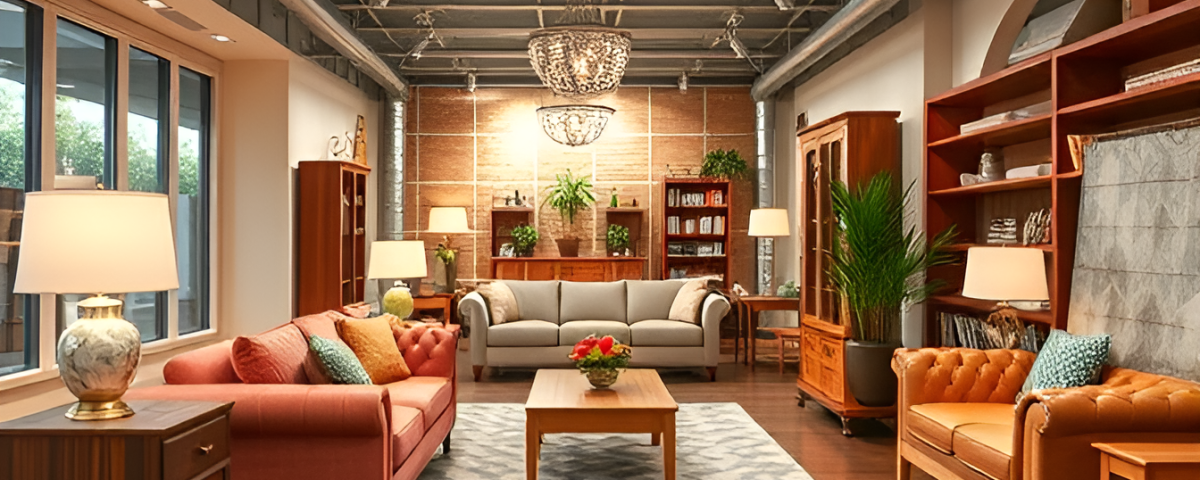How to Measure Your Space Before Furniture Shopping
kra cc
October 7, 2024Результаты удаления папиллом электрокоагуляцией
October 7, 2024Furniture shopping can be an exciting adventure. The thrill of picking out that perfect sofa or the ideal dining table is hard to beat. However, before you dive into the world of fabric swatches and style selections, there’s a crucial step you can’t overlook: measuring your space. Picture this: you’ve fallen in love with a stunning piece, only to find out it won’t fit through your doorway or leave enough room for movement. Frustrating, right? Properly measuring your space not only saves time but also ensures that your new furniture complements your home beautifully instead of overwhelming it. Let’s explore how to get those measurements just right so that your next furniture shopping experience is as seamless as possible!
The Importance of Measuring Before Furniture Shopping
Measuring before furniture shopping is essential for achieving the perfect fit in your space. Many shoppers underestimate how critical this step is, often leading to costly mistakes.
A well-measured area allows you to visualize how pieces will interact with each other. It helps create a balanced look that flows seamlessly throughout your home.
Additionally, knowing your dimensions prevents the frustration of discovering that stunning chair won’t squeeze through the door or fit against the wall as envisioned.
Proper measurements also account for essential factors like walking paths and clearance around furniture. This ensures comfort and functionality in every room.
Measuring transforms your shopping experience from guesswork into informed decision-making, paving the way for a harmonious living environment where style meets practicality effortlessly.
Tools Needed for Accurate Measurements
To ensure precise measurements before diving into furniture shopping, having the right tools is essential. A tape measure is your best friend in this endeavor. Opt for a sturdy one that easily locks and retracts.
A laser distance measurer can be an excellent alternative if you’re looking for speed and accuracy. It helps eliminate guesswork, especially in larger spaces.
Don’t forget about a notepad or a smartphone app to jot down dimensions as you go along. Keeping all your numbers organized saves time later when comparing options.
For awkward corners or tight spots, consider using flexible measuring tapes or even string to get around obstacles.
Having graph paper on hand can help visualize how different pieces will fit within your space. These simple tools make the process smoother and more enjoyable as you prepare for that exciting furniture shopping experience!
How to Measure Different Types of Spaces (Living Room, Bedroom, Kitchen)
Measuring a living room requires attention to both dimensions and flow. Start by measuring the length and width of the space. Don’t forget to account for doorways, windows, and any architectural features that might affect furniture placement.
For bedroom furniture, focus on key areas like the bed’s position. Measure wall-to-wall distance while considering nightstands or dressers nearby. Ensure there’s enough walking space around furniture for comfort.
In the kitchen, measurements can get tricky with appliances in play. Begin with countertops and island spaces check height as well as depth. Take note of clearance needed around ovens and refrigerators to avoid cramped cooking conditions.
Each type of room has its own quirks; pay close attention during this step. Accurate measurements will make your shopping experience smoother and more enjoyable when selecting pieces that fit perfectly within your home.
Tips for Measuring Awkward or Unique Spaces
Measuring awkward or unique spaces can be tricky. Start by sketching the area. A simple floor plan helps visualize dimensions and shapes.
Use a laser measure for precision, especially in tight spots where a tape measure struggles. Remember to note any architectural features like alcoves or columns that affect furniture placement.
For oddly shaped rooms, break them into smaller sections. Measure each part separately and then add the measurements together for an accurate total.
Don’t forget about vertical space! Consider ceiling height when selecting tall furniture pieces to avoid a cramped feel.
If possible, take photos from different angles while measuring. This visual reference will assist you later when choosing pieces that fit just right without overwhelming your space.
Common Mistakes to Avoid When Measuring
One of the most common mistakes is forgetting to account for doors and windows. These elements can significantly impact your furniture placement.
Another frequent oversight is measuring only once. Always double-check your dimensions to ensure accuracy. A small error can lead to big issues when it’s time to set up your new pieces.
Neglecting the height of your space can be a costly mistake, too. Furniture that fits perfectly on the floor might clash with low ceilings or tall light fixtures.
Some shoppers also forget about clearance space around furniture. It’s crucial to leave enough room for movement and accessibility, especially in high-traffic areas.
Don’t hesitate to measure from different angles. Sometimes what looks good visually may not fit well practically if you haven’t considered all perspectives during measurement.
Using Your Measurements to Choose the Right Furniture
Once you have your measurements, it’s time to make informed decisions. Start by comparing the dimensions of potential furniture pieces with the space available in your home.
Look for sofas, chairs, and tables that fit within those limits. This ensures they won’t dominate or feel cramped in the room.
Visualize how each piece will interact with existing elements like doors and windows. Ensure there’s ample walking space around key areas.
Don’t forget about scale and proportion. A large sectional may overwhelm a small living room, while delicate furniture can be lost in expansive spaces.
Consider modular options if flexibility is essential. They allow you to adapt as needs change without compromising on style.
Remember to factor in additional items—like side tables or lamps—to create a well-balanced setup that feels cohesive rather than cluttered.
Conclusion
Measuring your space accurately can make all the difference when it comes to furniture shopping. By taking the time to measure before you head out, you ensure that your new pieces will fit perfectly in your home. It’s not just about avoiding frustration; it’s also about making sure that what you bring into your space enhances its beauty and functionality.
With a few simple tools and techniques, measuring becomes an easy task. Whether you’re dealing with living rooms, bedrooms, or kitchens, knowing how to navigate those dimensions is key to selecting the right furniture. And let’s not forget about those awkward spaces—having strategies for unique shapes can save a lot of headaches down the line.
Avoiding common measurement mistakes is crucial too. Misjudging sizes could lead to costly returns or mismatched décor. When you use accurate measurements as a guide while shopping, you’ll find yourself much happier with your choices.
By prioritizing these steps before embarking on your furniture shopping adventure, you’re setting yourself up for success in creating a harmonious living environment tailored just for you!




